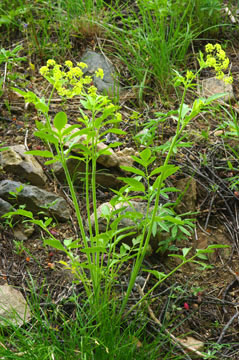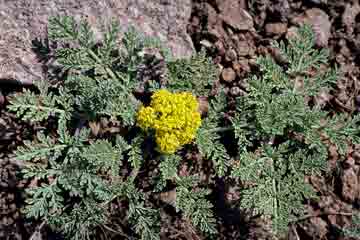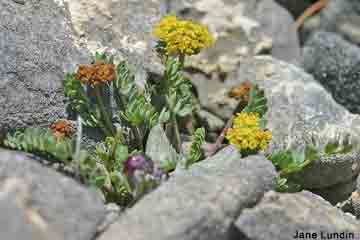
(1789-1831).Western Sweet Cicely, Osmorhiza occidentalis Nutt. ex Torr. & Gray (left). Crush this common plant’s leaves and flowers and smell their fragrance—licorice! Although true licorice is derived from a plant, Glycorrhiza glabra, in the pea family, the odor is the same. Our plant is easily identified not only by its distinctive fragrance, but also by deep green three-parted lanceolate leaves and rather dainty yellow flowers borne in a lacy umbel. Despite the name “sweet cicely,” osmorhizas are not true cicelys (chervils), although they are in the same family, and may also be used for flavoring.
Mountain Sweet Cicely, Osmorhiza berteroi D.C.: (rightt). Three-part, compound, deep-green, toothed leaves and tiny white flowers borne in an umbel characterize this ubiquitous plant. It is found in almost every state and Canadian province growing from sea-level, to mid-elevations. The roots and flowers of most osmorhizas have a pronounced licorice-like odor (Osmorhiza, derived from the Greek, means “fragrant-root”). This species, however, is odorless, so on first encounter one would hardly suspect that it is an Osmorhiza. The species name, berteroi, honors an Italian physician, Carlo Giuseppe Bertero


The Snow-line cymopterus, Cymopterus nivalis S. Watson (right) is much less common than the plant shown on the left. A true alpine plant, it grows on alpine tundra, well above tree-line. The plant is quite similar in appearance to the grayish cymopterus shown on the left, differing mostly in the color of the flowers.

